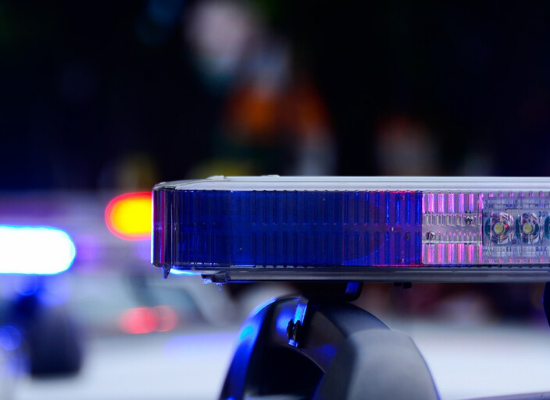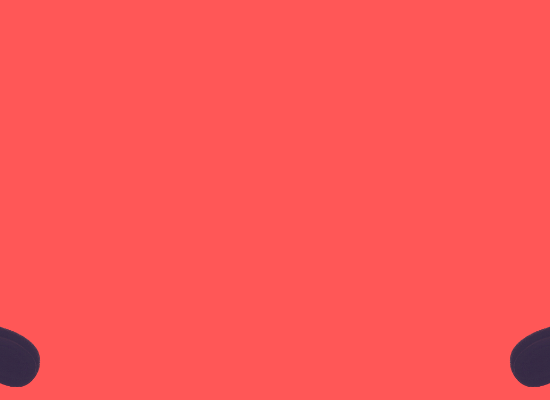
Stephanie Hepburn is a writer in New Orleans. She is the editor in chief of #CrisisTalk. You can reach her at .
Misha Kessler was a sophomore in college when he began to increasingly isolate himself, believing he’d become a burden to friends and family. These ruminating thoughts, combined with insomnia, reached a fever pitch. He thought he found his solution, an escape from pain, when he crawled out a windowsill of his dorm room, six stories above the ground, and willed himself to jump. His eyes were drawn back to the dorm room, and in seeing his image in the full length, closet mirror, Kessler’s anxiety, and self-hatred turned into rage. Launching himself back into the room, he stood in front of the mirror and punched it repeatedly, slicing his hand. The action calmed Kessler, but also made him realize the severity of the situation. “I hated myself so much that I punched out the mirror: my reflection. That was the moment when I knew, ‘Okay, this is serious. I need help.’”
Years later, Kessler can look back and identify precursors to suicidality that culminated with him stepping out onto the windowsill on January 18th, 2011. Kessler is gay and grew up in Cincinnati, Ohio, where he spent much of his childhood and teenage years internally conflicted between social acceptance and wanting to be himself. “I was so worried that I wasn’t passing as straight and giving myself away.” It started a destructive habit where he would examine his friends’ body language and responses to him, believing they thought him annoying and not fun to be around. Kessler says that this was when he began to perceive himself as burdensome. “There was a direct correlation between needing to hide who I was and never being able to be myself, and that developed into a preoccupation that I was doing something awkward and wasn’t funny or popular enough. For years, an inadequacy script ran through my head and eventually translated into full-fledged depressive isolation.”
The clues were there, says Kessler, and so he sought help from a therapist in the months before his suicide attempt. Accessibility to behavioral healthcare isn’t always easy for students, and that was particularly true at the time of the university Kessler attended, George Washington University in D.C. He says, initially, he was hoping to figure it out on his own. Kessler first tried self-help books, trying to implement the tools within them, but inevitably he would return to a depressive low. “It was cyclical, and each time I returned to that state, I felt less and less hope, and my despair deepened. What helps me now is realizing that I’m not always in control, and yes, I can do my best to address and prevent these lows, but sometimes they happen, and accepting that has been a huge part of my recovery.”
Inaccessible Therapist
Kessler, in his advocacy work, has made tremendous strides in making therapy more accessible to students, but in 2011, students at George Washington University had to pay $50 per session. He says, even at the time, that was on the high-end of cost-to-students when compared to other schools. By the time Kessler graduated, the university had begun to offer students six free therapy sessions. Kessler discovered a less-costly option on campus; he could pay $15 per session with clinicians-in-training. He had a good rapport with his therapist, but she began to push him outside his comfort zone. This may have been alright, says Kessler, except that a perfect storm happened and the therapist, his lifeline, was suddenly entirely inaccessible. He began to have nightmares and was fearful of falling asleep, which developed into insomnia, disturbing his body’s natural rhythm. It also lowered his resilience to stress, which was at a palpable high, thrusting him into a 24-hour recurrent panic attack. When Kessler called his therapist, an automated messaging service answered. He could leave her a voicemail but could not contact her directly. Kessler didn’t hear back from his therapist until six days later. “I didn’t know where to go and thought she was my only hope.” It was on day three of not hearing back from his therapist that he crawled onto the windowsill six stories up and thought the only solution to end his pain was to jump. Luckily, punching the mirror jolted Kessler and he called a close friend, asking her to walk him to the hospital where he stayed in the psychiatric ward for two days. He says the experience wasn’t horrible because he bonded with a kind, encouraging nurse, but that had he known to call a crisis number, or that a Living Room model existed, it would have been much better. “Young people need to know what resources exist so that they can use them. Part of my decline was that I couldn’t reach the one person I depended on; if I had known there were other supports, I would have used them.”
Forced Withdrawal Policy
When the hospital released Kessler, he had a message from the deputy director of the University Counseling Center (UCC): he was not allowed to return to his dorm until he met with her. It was then that Kessler learned of the forced withdrawal policy. He says, under these policies, students who express suicidal ideation are told to check into a hospital. When they come out, the school tells them they can either withdraw or go before a judiciary committee. “Students are deterred from getting the help they need if they fear that by doing so they will be forced to withdraw from school. It puts students at grave risk because many won’t seek help on account of the policy, and it punishes those who do.”
What’s more, says Kessler, is that forcing students to leave school for their disability is discriminatory against students with behavioral health issues and invokes the protection of the Americans with Disabilities Act (ADA). He says that instead of trying to meet students’ needs, universities don’t want the liability of having suicidal students on campus. Kessler learned of Jordan Nott’s experience, a former George Washington University student whose story is remarkably similar to his own. During his sophomore year in 2004, Nott began to develop suicidal ideation. He had been working with a therapist at the campus counseling center, but it was the weekend, and the therapist was unavailable, so he decided it was safest to spend the night at the university hospital. While there, he received a letter from George Washington University’s administration stating he could not return to his dorm. The letter was followed up by one from the judicial services office, informing Nott that he was temporarily suspended. The reasons cited in the letters were the university’s policy on psychological distress and that Nott had engaged in endangering behavior. The university required Nott to withdraw from school, and the communication stated that if he attempted to return to campus, he ran the risk of arrest. Nott filed a lawsuit against George Washington University that was settled out-of-court in 2006.
Forced withdrawals, and the threat of them, continue to take place at universities. In 2014, a George Washington University student told her UCC psychologist she wanted to stop on-campus counseling. It had been three years since her suicide attempt, and she was participating in ongoing, outside therapy. The student felt she wasn’t benefiting from on-campus counseling, and it was an additional, unnecessary cost. The UCC psychologist informed her that terminating on-campus therapy could lead to expulsion, stating the center would tell the Dean who would then expel her from school. Responding on behalf of the UCC, Dave Andrews, the Associate Director of Media Relations at the time, said George Washington University would not expel a student who attempted suicide, revealing a disconnect between culture and policy. Punitive measures against students in distress is a pervasive issue plaguing campuses across the nation. Last year, Harrison Fowler told the New York Times that while a student at Stanford, he went to the university counseling center where he was asked if he’d ever thought of suicide. He said yes, which triggered a series of unfortunate events, including an adverse reaction to prescribed antidepressants that caused Fowler to have suicidal ideation. In response to his crisis, he says the university coerced him to go home instead of trying to meet his mental health needs.
Fortunately for Kessler, the counseling center’s deputy director did allow him to return to school, but his crisis experience, and that of Nott and other students, triggered him to launch Remedient and Seven Summits for Suicide Prevention. Kessler works to decrease stigma, pushing universities to do what’s right and support students experiencing mental health and suicide crisis instead of defaulting to legal self-protection. “People with suicidal ideation are already self-stigmatizing; combine that with an academic system that reinforces stigma and doles out punishment—well, it’s a lethal combination.”
Practical Obstacles: Why Distance Matters
A warm handoff, says Kessler, is vital, and at first, it seemed that the hospital did so. It put him in touch with a caseworker who got him started on a low-level antidepressant, which decreased his level of acuity, and set him up with a therapist and psychiatrist. This was also what the deputy director of the university’s counseling center required before Kessler was allowed to return to his dorm. The problem is that the therapist was at the end of the Metro line on one end, and the psychiatrist was equally far away on the other end. It was impractical for Kessler to see either. Like many students, he didn’t have access to a car, which meant he would have to take the Metro, a bus, and then walk to the therapist or psychiatrist’s office. “It wasn’t thought out by the caseworker from a logistics perspective, and that’s often the case.”
Kessler says the behavioral health field needs to place more emphasis on increasing access to crisis services information on campuses, eliminating practical challenges, and facilitating interventions to overcome them. “People can’t get help, no matter how much they want to, if they don’t know what’s available or if where they are directed is inaccessible. Also, universities need to facilitate relationships with crisis services, focusing less on liability and more on students getting the help they need.”
#CrisisTalk is committed to sparking ongoing dialogue on behavioral health crisis and including diverse perspectives and experiences. We’d like to hear what you think about this or any of our articles. Here’s how to send a letter to the editor.









